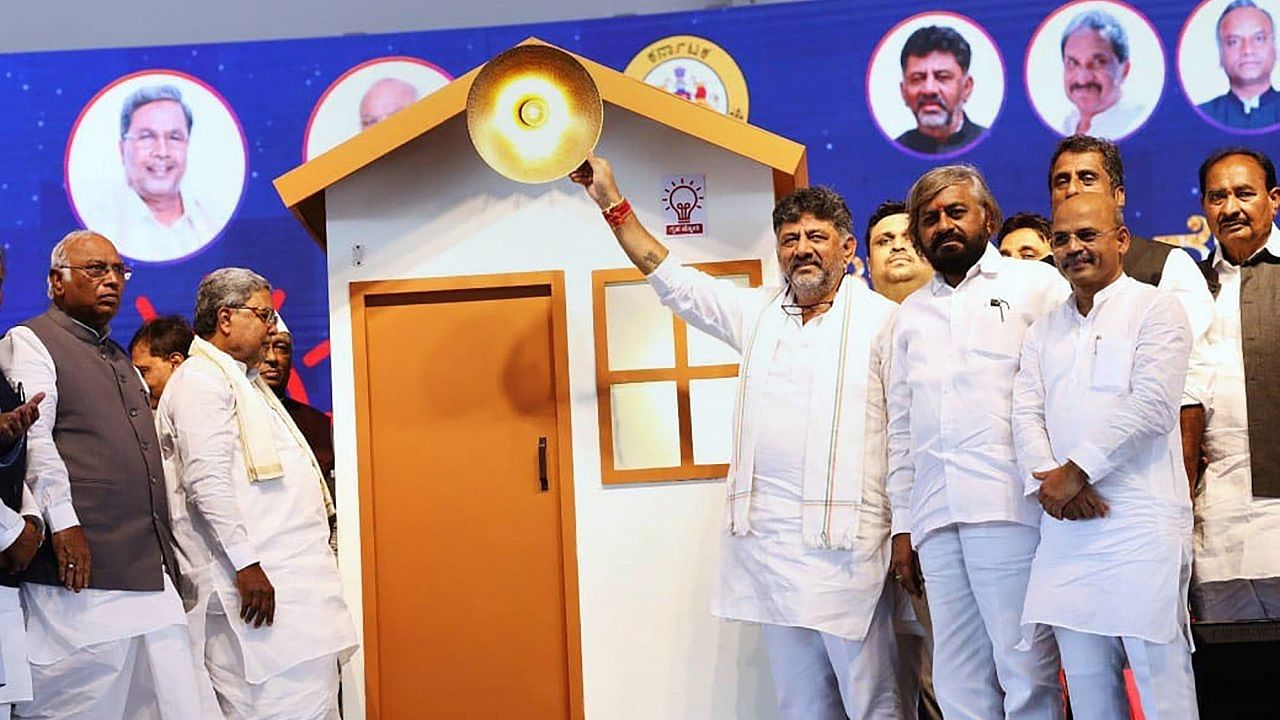
'Gruha Jyothi’ scheme launch in Karnataka.
Credit: PTI Photo
In a move expected to benefit poor families, the Cabinet on Thursday decided to tweak the Gruha Jyoti scheme by giving households 10 extra units beyond their average consumption, while calculating the quantum of free power.
Now, a household whose average consumption is below 90 units will get 10 units extra upfront. Earlier, this household got a buffer of just 10% over its average consumption of 90 units.
However, the new formula may prove disadvantageous to households whose average consumption is above 100 units.
The Cabinet also approved the Bill to constitute a Karnataka Motor Transport and other Allied Workers’ Social Security and Welfare Board to fund accident-related expenditure for employees in the private transport sector.
After the Cabinet meeting, Law and Parliamentary Affairs Minister H K Patil said that about 1.95 crore consumers in the state utilise only 53 units of power.
So, giving them 10% additional buffer was a sort of injustice to them. Therefore, the government decided to tweak the guidelines and give upfront 10 units additionally to all consumers, instead of 10%.
The minister said 69.73 lakh consumers in Bescom jurisdiction use only 48 units and providing them an additional buffer of 10 units would cost Rs 33 crore more.
The Cabinet also approved to amend the vehicle scrapping policy, to enable those who purchase electric vehicles in lieu of their scrapped vehicles.
They will get Rs 1,000 for every lakh rupees spent on a two-wheeler, with a minimum subsidy of Rs 10,000 for four-wheelers.
“For instance, if a two-wheeler costs Rs 2 lakh, subsidy will be Rs 2,000, while in the case of four-wheeler, Rs 10,000 is fixed for vehicle costing Rs 5 lakh. A four-wheeler costing Rs 5 lakh to Rs 10 lakh will receive Rs 20,000 subsidy, with a maximum subsidy limit of Rs 50,000,” he said.
He said 10% subsidy will be given to those e-vehicles that are purchased by the construction and agriculture sector after the scrapping.